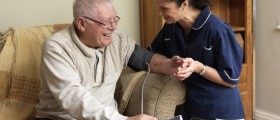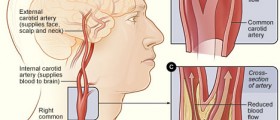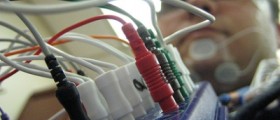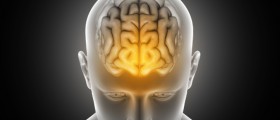Mini stroke or transient ischemic attack is not something that should be taken lightly or ignored, and it is very important to recognize it and react within the following 24 hours. A mini stroke can lead to a full-fledged stroke, which can be very dangerous, debilitating and possibly life-threatening.
A mini stroke or a regular stroke can occur when the blood flow to the brain is obstructed. This results in certain changes and processes in the body, which is perceived as symptoms that should be recognized and reported to a doctor as soon as possible.
Causes for Mini Stroke
Mini strokes occur when there is not enough blood brought to the brain. Several factors can lead to the obstruction or disruption of the blood flow and some of them are unfortunately out of control and there is no way of knowing when they can occur. On the other hand, other factors can be foreseen, and hence, avoided.
In most cases, the blood vessels leading to the brain are narrowed down and a clot forms in them. This prevents normal blood supply and it can possibly lead to a mini stroke. Generally, the factors and causes leading to a mini stroke are the same for both men and women.
Some of the most common causes of mini stroke are thrombosis or blood clots, atherosclerosis (in which blood vessels are narrowed), embolus, which is a clot traveling downwards from the heart, debris and foreign material stuck in the blood vessels and intracerebral hemorrhage or bleeding from a burst blood vessel.
Symptoms of Mini Stroke in Women
Most symptoms of mini stroke are seen in both men and women, but there are some that are characteristic only for women.
Common symptoms of mini stroke include speech impediment, inability to talk normally and movement restrictions, problems with vision, general feeling of confusion and inability to follow instructions, dizziness, loss of coordination and loss of balance and sudden falling without losing consciousness.
Symptoms of mini stroke that are only observed in women include pain, headache, altered mental state, dizziness and lightheadedness, hiccups, pain in just one side of the body, difficulty breathing, nausea and vomiting, chest pain and increased heart rate.
The problem with these symptoms is that they can be confused with many other conditions and disorders, so a proper reaction often comes late. It is important to concentrate on the state of the body and the mind and to see if one or more of these symptoms are present. If they are present at the same time, there is a great chance that the person is having a mini stroke. In such cases it is imperative to seek immediate medical attention.
Stroke in Pregnancy Facts
- A recent analysis of the Nationwide Inpatient Sample revealed an all-stroke incidence of 34.2/100 000 deliveries.
- In a population-based study, the ischemic stroke rate was 11/100 000 deliveries, with the postpartum period posing the highest risk. In this same cohort, intracerebral hemorrhage occurred at a rate of 9/100 000 deliveries, and similar to ischemic stroke, the highest risk was in the postpartum period.
- Risk factors for pregnancy-associated stroke and transient ischemic attack include age >35 years, black ethnicity, hypertension, heart disease, smoking, diabetes, lupus, sickle cell disease, migraine headaches, alcohol and substance abuse, cesarean delivery, fluid, electrolyte and acid-base disorders, thrombophilia, multiple gestation, greater parity, postpartum infection, pre-eclampsia, and eclampsia.
- The proportion of patients with pregnancy-associated stroke who have pre-eclampsia or eclampsia is 25% to 45%.
- Approximately 2% of pregnancy-associated strokes are attributable to venous thrombosis.
- Although the puerperium and oral contraceptive use are commonly associated with cerebral venous sinus thrombosis, thrombophilic disorders are also important causes.


















Your thoughts on this
Loading...